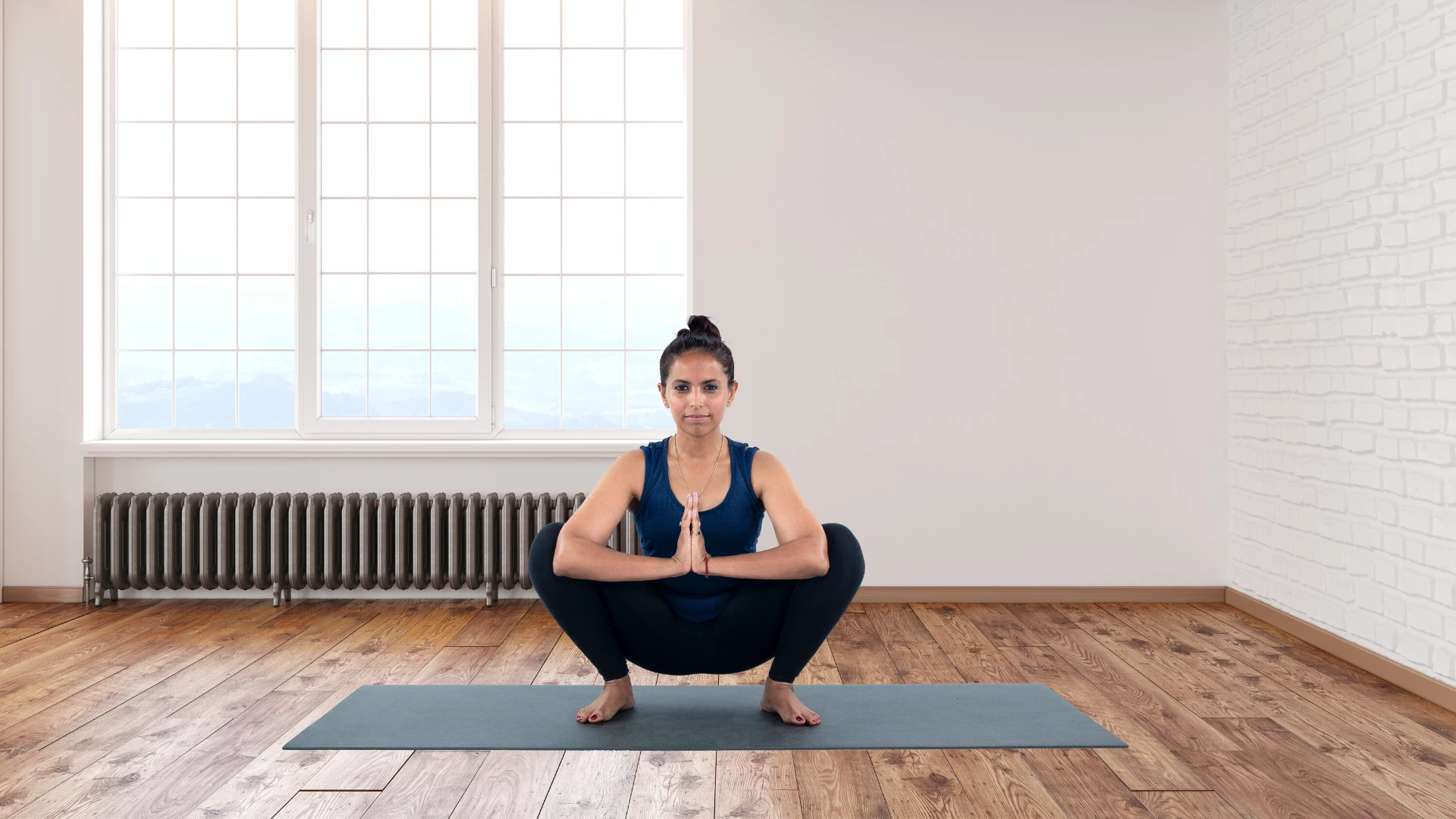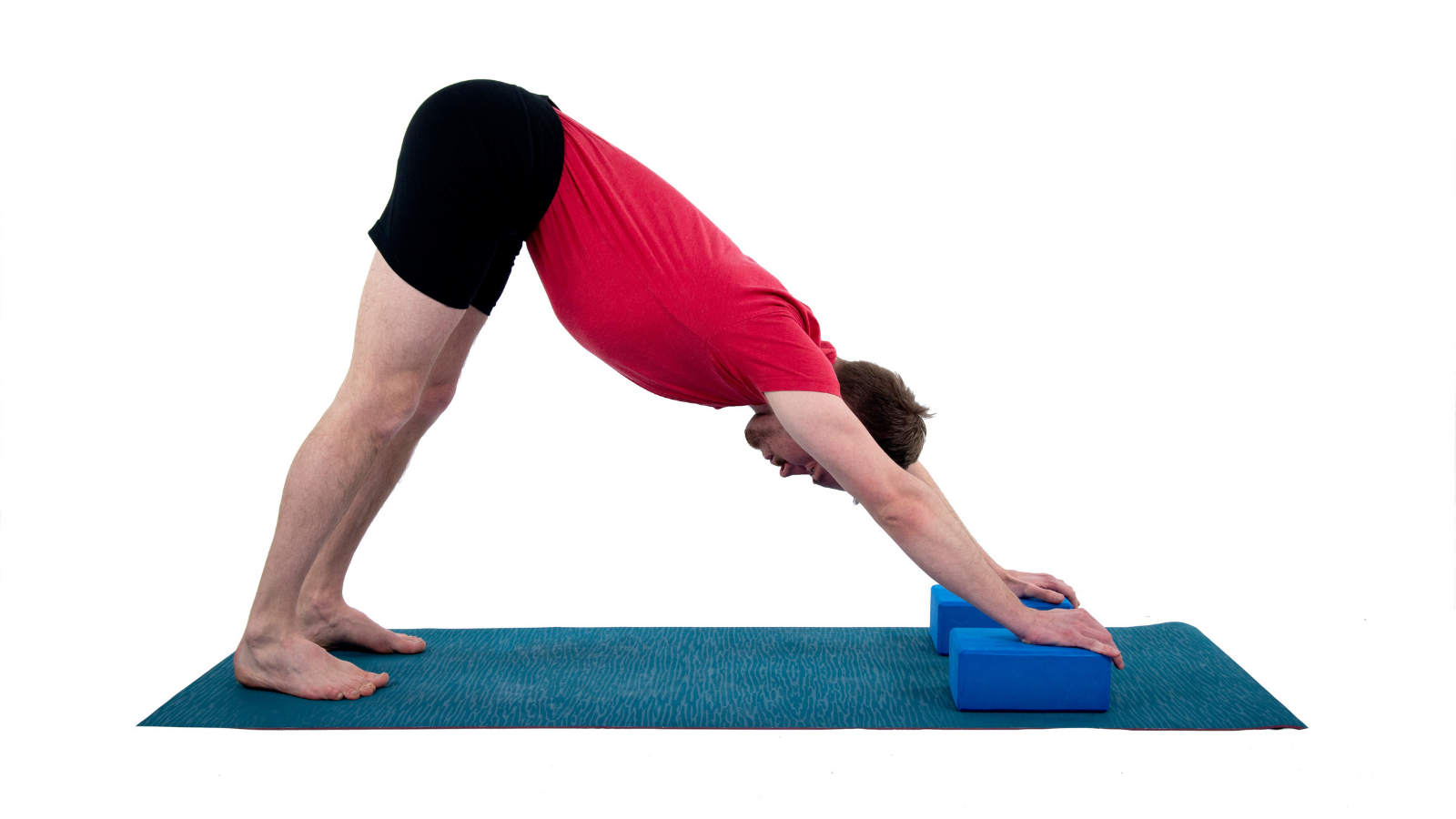Flat Feet Exercises: How Yoga Can Help

Article At A Glance
Flat feet are incredibly common and can cause debilitating symptoms such as leg cramps, toe drift, and pain in the heels, arches, and ankles. But did you know that several simple yoga poses may help? Discover effective flat feet exercises and yoga poses to rebuild arches, relieve pain, and reduce inflammation.
What are the best flat feet exercises to rebuild the arches and reduce pain? To understand this, let me introduce you to my friend, Maria. A year ago, Maria sent me an email asking if I could suggest a suitable Ayurvedic intervention program to correct her flat feet. Maria mentioned that she had been suffering from painful feet, including foot and leg discomfort and pain and inflammation on the bottom of the feet. When she approached a wellness practitioner, he suggested that she do something about her flat feet and strengthen her feet.
At that time, I was unaware of any health concerns associated with flat feet. Additionally, Ayurveda did not discuss flat feet in general. However, in the yoga section of the Ayurvedic texts, I found some interesting information about flat feet.
So, I browsed through other journals, books, and websites to find flat feet exercises and to understand more about this condition. Based on the knowledge I acquired, I wrote to the individual and suggested yoga therapy to help her with the condition.
What Exactly Are Flat Feet?
 Flat feet are extremely common. In fact, flat feet start out in infancy. The structures (muscles, tendons, ligaments) that are responsible for creating the arches in the feet are not fully formed at birth.
Flat feet are extremely common. In fact, flat feet start out in infancy. The structures (muscles, tendons, ligaments) that are responsible for creating the arches in the feet are not fully formed at birth.
As we grow and use our feet for locomotion, these structures mature and fully develop, and the arches begin to appear. The arches provide optimal support to the foot during movement, help to distribute body weight across the feet and legs, and stabilize the foot on a variety of surfaces.
However, in some individuals, these structures develop poorly, resulting in a low arch or no arch. Having a reasonably low arch or no arch at all can result in the entire soles of the feet touching the ground.
Flat feet may also be associated with overpronation. In this condition, the ankle bone leans inward more toward the center line resulting in the foot rolling to the inner side during standing and walking. Overpronation puts a lot of strain on the big and second toes and creates instability in the foot.
The excessive rotation of the foot leads to more rotation of the lower tibia and stress on the ligaments and tendons of the foot, resulting in shin splints and knee pain. An increased risk of injury and heel pain may also arise from overpronation.
The Symptoms of Flat Feet
Flat feet are common, and many people with flat feet typically will not experience any symptoms. If the foot flattens out when you stand and is not painful, treatment is not required. However, if the flat feet are rigid and not flexible, this can be painful and also result in imbalance from prolonged foot and leg discomfort.
If this persists, it can lead to other problems, including pain (especially in the lower back), inflammation on the bottom of the feet, tendonitis, or bone spurs.
Generally, rigid, flat feet are also linked with less movement, a sedentary lifestyle, and increased body weight. Clinicians and qualified healthcare practitioners can diagnose the condition by examining the feet and observing the client when they stand and walk. The health care professional may suggest motion-control shoes, insoles, ankle brace, or orthotics to stabilize the foot and correct the motion in overpronation.
The American Academy of Orthopedic Surgeons (AAOS) recommends various exercises to improve strength and flexibility in the feet and ankles. My publication search revealed one scientific study that focused on certain foot-specific exercises and barefoot weight bearing to achieve sufficient changes in foot function. This study confirmed that proper training methods specific to the foot, heel, and calf muscles will alleviate foot problems in participants with flat feet.
Yoga, with its repertoire of asanas that strengthen the calf muscles, heel, or arch area, may improve foot structure and function in people with flat feet. Alternatively, in some cases, it may even strengthen the feet by increasing the foot arch. Even though I did not find any specific article on yoga asanas and flat feet, based on research and anecdotal experiences, I suggested the following asanas to Maria.
Flat Feet Exercises: How Yoga Can Help
 Surya Namaskara (Sun Salutations) with emphasis on Adho Mukha Svanasana (Downward-Facing Dog Pose) (photo right), Utkatasana (Fierce Pose), and Phalakasana (Plank Pose), including Kumbhakasana (High Plank Pose) and Chaturanga Dandasana (Four-Limbed Staff Pose) to release the tightness in the heels and strengthen the ligaments and tendons in the feet.
Surya Namaskara (Sun Salutations) with emphasis on Adho Mukha Svanasana (Downward-Facing Dog Pose) (photo right), Utkatasana (Fierce Pose), and Phalakasana (Plank Pose), including Kumbhakasana (High Plank Pose) and Chaturanga Dandasana (Four-Limbed Staff Pose) to release the tightness in the heels and strengthen the ligaments and tendons in the feet. Virabhadrasana I (Warrior I Pose), Parsvottanasana (Intense Side Stretch Pose), Trikonasana (Triangle Pose) (see photo right) and Baddha Konasana (Bound Angle Pose). These asanas were suggested to strengthen and stabilize the muscles of the feet and knees, to stretch the calf muscles, and to create an inner arch lift.
Virabhadrasana I (Warrior I Pose), Parsvottanasana (Intense Side Stretch Pose), Trikonasana (Triangle Pose) (see photo right) and Baddha Konasana (Bound Angle Pose). These asanas were suggested to strengthen and stabilize the muscles of the feet and knees, to stretch the calf muscles, and to create an inner arch lift.- For standing poses, I suggested that she keep the ball of the foot on the floor but lift all the toes up to strengthen the tendons and ligaments.
 I also suggested simple squats and squatting yoga postures, such as Malasana (Squatting Pose- photo right), and sitting poses that stretch the top of the foot and strengthen the arches, such as Virasana (Hero’s Pose).
I also suggested simple squats and squatting yoga postures, such as Malasana (Squatting Pose- photo right), and sitting poses that stretch the top of the foot and strengthen the arches, such as Virasana (Hero’s Pose).
There are other asanas that serve as flat feet exercises and that may also help in releasing the tension in the tendons, strengthen the muscles, and stimulate the arches of the feet to appear. But I did not wish to see Maria rushing into a long series of postures and hurting herself more in the process. Fortunately, Maria judiciously did all the asanas that I had suggested, holding each pose for about 15 seconds and repeating the poses at least three times.
As she practiced, she went to the edge in some of the yoga poses but was mindful at the same time. Four months into the practice, Maria noticed that the radiating pain had subsided! Her energy was back, the stiffness in the ankle and heel had eased, and she did not have any problems while standing behind the cash counter at her workplace. She described her life as normal, productive, and devoid of physical pain.
It is now eight months since Maria incorporated those asanas into her daily lifestyle. A week ago, she had one more interesting piece of information to share: she noticed a slight arch in both feet. Maria was thrilled and promised that yoga would now be part and parcel of her daily lifestyle. I, too, was amazed.
This one anecdotal example is encouraging enough to warrant a full-scale scientific study. But for those of us who are already on the yoga path, we don’t need a research study to prove the benefits. We are already experiencing them!
Also, read...
Got Foot Pain? Try These Yoga Practices
3 Plantar Fascia Stretches: Freedom from Foot Pain
12 Causes of Chronic Inflammation
Related courses

Rammohan (Ram) Rao comes from a family of Ayurvedic practitioners and Vedic teachers in India tracing back to the illustrious Vedic-acharya Rishi Kaundinya (although Ram admits he cannot do the Eka pada or Dwi pada Kaundinyasana). With a doctorate in Neuroscience, Ram was a Research Associate Professor at the Buck Institute for Research on Aging. He focused on various aspects of age-associated neurodegenerative diseases with an emphasis on Alzheimer’s disease. In addition, Ram completed the academic training at the California College of Ayurveda (CCA) and received his certification as a Clinical Ayurvedic Specialist. He has been a faculty member of the California College of Ayurveda and teaches in their Nevada City location. Ram is also a dedicated Hatha yoga practitioner and is a Registered Yoga Teacher from Yoga Alliance USA. In his spare time, he offers consultations in YAMP techniques (Yoga, Ayurveda, Meditation & Pranayama). Ram has published several articles in major Yoga/Ayurveda magazines and has been a featured speaker in several national and international meetings and symposia. He is a member of the National Ayurvedic Medical Association (NAMA) and is on the Research Board of the Association of Ayurvedic Professionals of North America (AAPNA).



